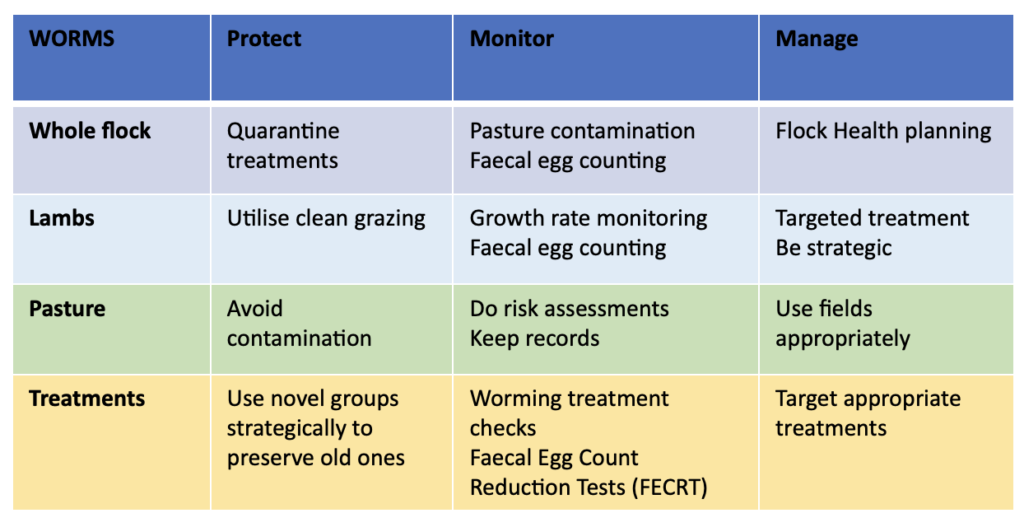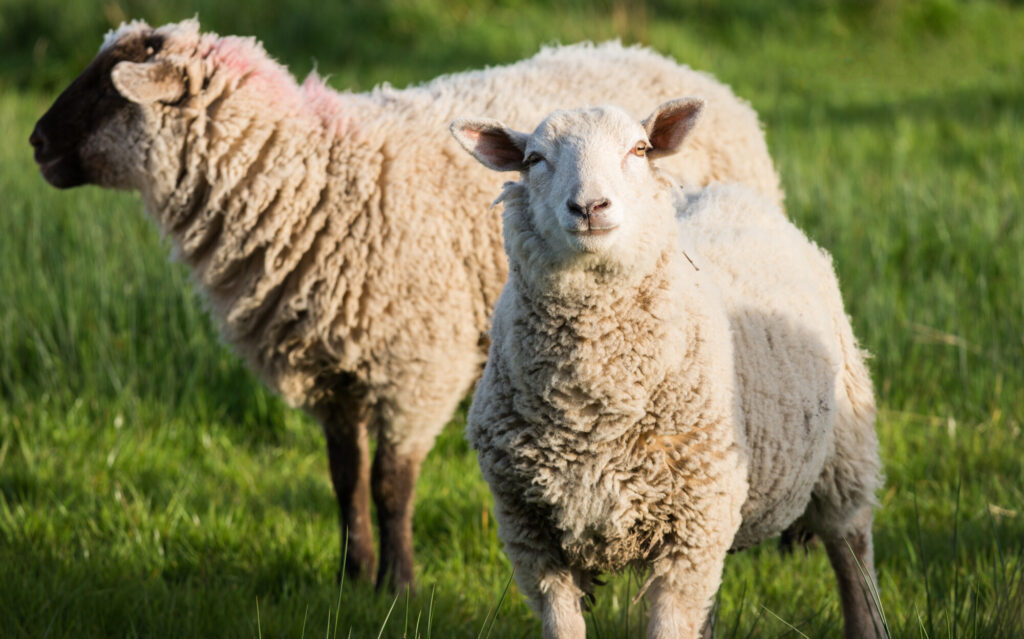How to use funding to implement a strategic worm control plan for sheep
26th July 2023
Animal Health and Welfare Pathway funding can help sheep farmers implement a strategic worm control plan. The Pathway, which is open now, will pay sheep farmers £436, covering the cost of the vet’s time and the diagnostic testing.
As part of the visit, testing can be used to understand any worm issues on farm, such as resistance – a problem predicted to cost the UK livestock industry about £7.5m a year1 in production losses and treatment costs.
Independent vet Dr Fiona Lovatt says the Pathway provides a good opportunity for the vet to get on a farm and work with the farmer to advise on a strategic worm control plan.
“Now is a good time to take up this offer as the lambs are growing and worms will be present. It will be a good time for the vet to conduct some FEC and post-treatment tests and understand the risks on a farm and how they can be managed.”
What is a strategic worm control plan?
A strategic worm control plan is something all farmers can do with their vet regardless of the Pathway and is something Dr Lovatt recommends everyone has in place.
“If you don’t know what the worm risks are and where they are on your land, then it makes it harder to manage worms,” she said.

Table 1 shows a summary of strategic management of worms in sheep, and how to protect, monitor and manage the flock, lambs, the pasture and the available treatments.
Understanding grazing management
The first step in creating a strategic worm control plan is looking at a map of the farm and understanding where lambs have been grazing and how long they have been grazing specific fields. This will give an idea of the level of contamination and any clean pastures that haven’t been grazed, such as silage aftermaths.
“A grazing map will give you an overall view of how contaminated your land is, understand the risks, and plan where lambs may graze. For example, if lambs can be weaned on to clean grazing, it can make a big difference in keeping them growing,” she said.
The highest-risk pastures are those grazed by ewes and lambs earlier in the year or grazed by store/ewe lambs in the previous autumn/winter. Silage aftermaths or fields that have not been grazed for 12 months provide a lower-risk option to move lambs onto post-weaning.
To reduce worm pressure on the land and encourage good post weaning growth rates, it is advised to provide the lowest-risk pasture for newly weaned lambs and consider weaning at 12 weeks onto good clover-rich grazing.
Worm contamination on dirty pastures can be reduced by grazing them with weaned ewes in good body condition or grazing cattle and sheep together. However, despite this reducing contamination, there are not short cuts to properly clean grazing and there is no substitute for talking through long term grazing plans with your vet.
Testing and monitoring
The second step is to conduct some faecal egg count (FEC) tests and use the data alongside growth rates to show how lambs are performing and when treatments may be needed, rather than blanket treating large groups based on the time of the year.
“If you’re tracking growth, it will give you a good idea of how things are going. If lambs are not performing, worms are usually top of the list of what might be affecting their growth. Monitoring growth and FECs also allows you to see what’s happening on different parts of the farm.”
Dr Lovatt suggests weighing lambs between birth and weaning at about 6-8 weeks old and again at weaning to give an idea of growth rates. “Even if it’s just 20 lambs in a group and those same 20 are weighed again at weaning, they can be used as a monitor. It can also be quite motivating for farmers to see how well their animals are performing,” she added.
Where weighing individual lambs isn’t an option, the alternative usually used, Dr Lovatt suggests, is judging by eye. However, she warns that a worm burden can get very bad before a shepherd can notice clinical signs. “Our eyes are not as sensitive as a weighing machine,” she added.
Using Group 4 and 5 wormers strategically
The third step is strategically using group 4 and 5 treatments, such as the Group 5 treatment STARTECT, which will be available later this year, to prevent resistant worms from being brought into a flock and to reduce pasture contamination.
“These should be used as quarantine treatments and can also be used in mid to late season in lambs to reduce numbers of resistant worms,” she said.
Zoetis Vet Patricia van Veen says it is important for farmers and others in the industry to understand the role of group 4 and 5 wormers.
“They are an important part of a worm control plan and can help slow the development of wormer resistance on farms,” she said.
“Farmers may be unaware of wormer resistance on their farm, this can be due to a lack of testing. When that’s the case, they could unknowingly be adding to the resistance problem by using treatments that are not as effective, impacting lamb growth and profitability.”
The Sustainable Control of Parasites in Sheep (SCOPS) advises that one of the two newer groups be used on all sheep farms at two points in their worm control plan. Firstly, as part of their quarantine treatments for all incoming sheep, and secondly, as a one-off targeted treatment for lambs, in the latter part of the grazing season.

